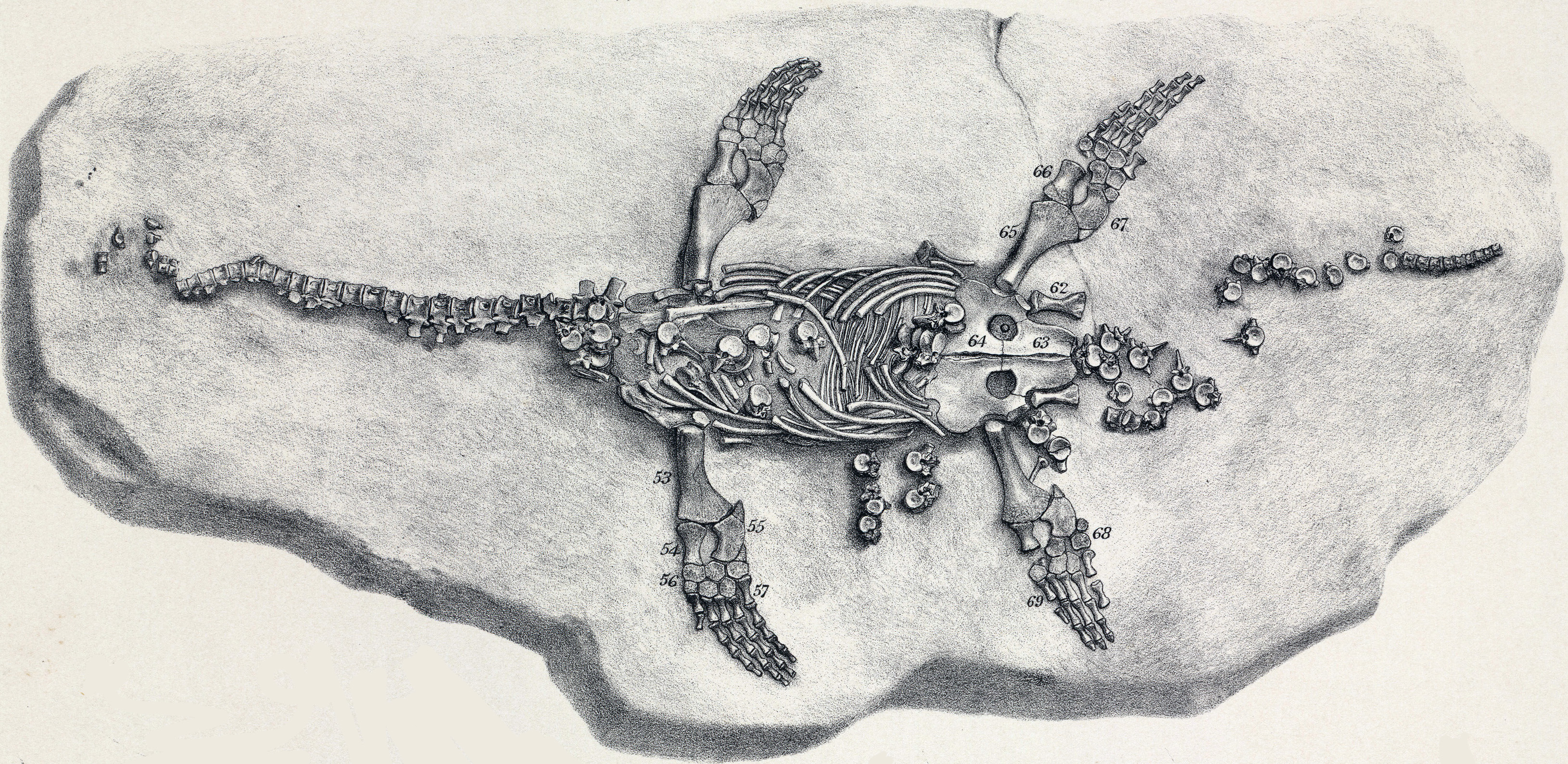|
Microcleidid
Microcleididae is an extinct family of basal plesiosauroid plesiosaurs from the Early Jurassic (middle Sinemurian to late Toarcian stages) of France, Germany, Portugal and the United Kingdom. Currently, the oldest and the most known microcleidid is '' Eretmosaurus'' from the middle Sinemurian of the United Kingdom. Microcleididae was formally named and described by Roger B. J. Benson, Mark Evans and Patrick S. Druckenmiller in 2012. History and Phylogeny Großman (2007) referred informally to "microcleidid elasmosaurs", a clade comprising the three taxa referred to the Microcleididae by Benson ''et al.'' (2012). Ketchum and Benson (2010) found the traditional "microcleidid" genera to nest within a monophyletic Plesiosauridae, in a close position to ''Plesiosaurus''. However, Ketchum and Benson (2011) performed a phylogenetic analysis which found a monospecific Plesiosauridae, and a monophyletic Microcleididae. Smith ''et al.'' (in press) described a new "microcleidid" '' Lusonec ... [...More Info...] [...Related Items...] OR: [Wikipedia] [Google] [Baidu] |
Plesiosauroid
Plesiosauroidea (; Greek: 'near, close to' and 'lizard') is an extinct clade of carnivorous marine reptiles. They have the snake-like longest neck to body ratio of any reptile. Plesiosauroids are known from the Jurassic and Cretaceous periods. After their discovery, some plesiosauroids were said to have resembled "a snake threaded through the shell of a turtle", although they had no shell. Plesiosauroidea appeared at the Early Jurassic Period (late Sinemurian stage) and thrived until the K-Pg extinction, at the end of the Cretaceous Period. The oldest confirmed plesiosauroid is ''Plesiosaurus'' itself, as all younger taxa were recently found to be pliosauroids. While they were Mesozoic diapsid reptiles that lived at the same time as dinosaurs, they did not belong to the latter. Gastroliths are frequently found associated with plesiosaurs. History of discovery The first complete plesiosauroid skeletons were found in England by Mary Anning, in the early 19th century, and w ... [...More Info...] [...Related Items...] OR: [Wikipedia] [Google] [Baidu] |
Plesiosaurus
''Plesiosaurus'' (Greek: ' ('), near to + ' ('), lizard) is a genus of extinct, large marine sauropterygian reptile that lived during the Early Jurassic. It is known by nearly complete skeletons from the Lias of England. It is distinguishable by its small head, long and slender neck, broad turtle-like body, a short tail, and two pairs of large, elongated paddles. It lends its name to the order Plesiosauria, of which it is an early, but fairly typical member. It contains only one species, the type, ''Plesiosaurus dolichodeirus''. Other species once assigned to this genus, including ''P. brachypterygius'', ''P. guilielmiimperatoris'', and ''P. tournemirensis'' have been reassigned to new genera, such as '' Hydrorion'', '' Seeleyosaurus'' and '' Microcleidus''. Discovery The first complete skeleton of ''Plesiosaurus'' was discovered by early paleontologist and fossil hunter Mary Anning in Sinemurian (Early Jurassic)-age rocks of the lower Lias Group in December 1823 near Lyme R ... [...More Info...] [...Related Items...] OR: [Wikipedia] [Google] [Baidu] |
Eretmosaurus
''Eretmosaurus'' (meaning "oar lizard") is an extinct genus of plesiosaur from the Early and Middle Jurassic of England and Russia. Two species are known: ''E. rugosus'' and ''E. dubius''. History ''Eretmosaurus rugosus'' The holotype of ''E. rugosus'' consists of vertebrae, girdles, and limb bones and was discovered along Aust Cliff, where the Westbury Formation outcrops. Specimen BRSMB Cb 2458 was also assigned to the species by Owen (1840). This specimen later became the syntype and it consisted of several vertebrae that had been discovered at different locations in the Blue Lias in Gloucestershire. Owen (1840) was the first to describe the specimens, which were named as ''Plesiosaurus rugosus''.R. Owen. (1840). Report on British fossil reptiles. ''Report of the Ninth Meeting of the British Association for the Advancement of Science, Reports on the State of Science'' 43-126 Later, Owen (1865) described a headless skeleton discovered in the Ammonites stellaris zone of ... [...More Info...] [...Related Items...] OR: [Wikipedia] [Google] [Baidu] |


